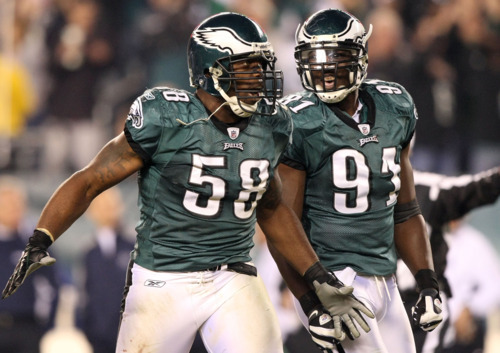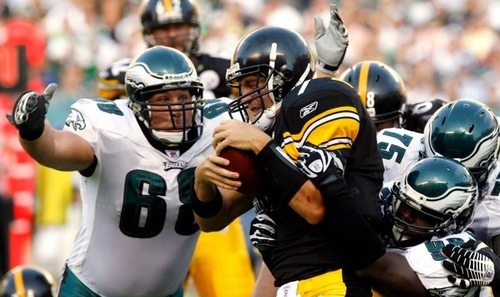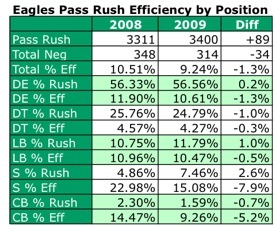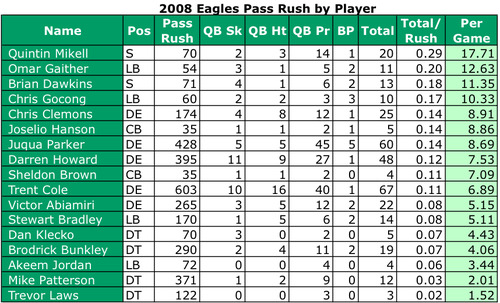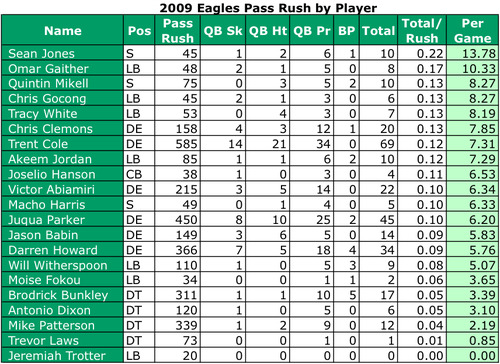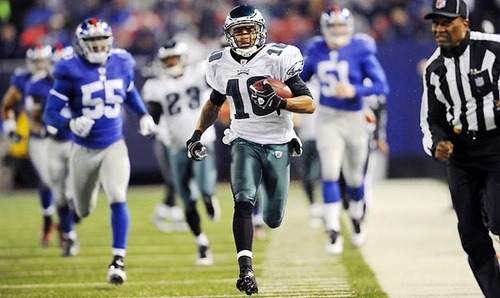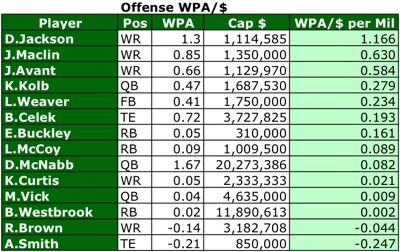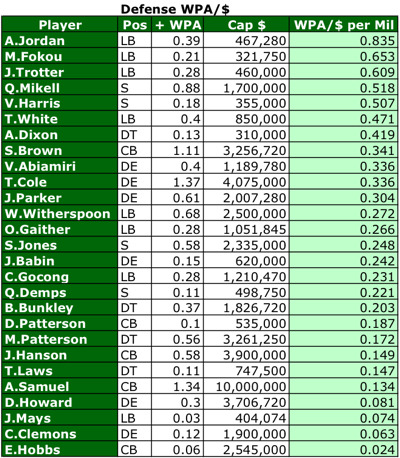I have to admit, this exercise was a lot easier last year. When I was struggling with the final spots on my predicted roster this year, the problem wasn't finding guys to cut -- it was the opposite. There are half a dozen players that I couldn't care less about making the team. Yet some of them are going to survive cuts, if only by default. Knowing this, I wouldn't be surprised if the Eagles shake up the bottom few jobs by bringing in players from the outside.
In any case, here goes nothing:
Quarterback: (3) Vick, Foles, Kafka. What Foles showed in the preseason was far beyond what anyone expected of him. By looking like a natural NFL quarterback with the poise and pocket presence to make all the throws, he most likely played himself into the backup job, or at least QBOTF consideration. Mike Kafka's ceiling looks more like AJ Feeley at this point, but that's not without value. While Trent Edwards is the walking definition of the replacement player you can get off the street, Kafka has been groomed in Philadelphia.
Running Back: (4) McCoy, Lewis, Brown, Havili. Bryce Brown won the third RB spot by showing his potential. He's still quite raw in most phases of the game, but that's fine in this spot. It's possible the Eagles could keep him inactive in the first few weeks, though, unless he's demonstrated that he can be an asset in special teams. Chris Polk is the odd man out, either to the practice squad or injured reserve. He never showed anything of note, so I wouldn't feel bad letting him go. Stanley Havili played his way into the fullback job against the Patriots, although the team could look at waiver wire castoffs as well.
Tight End: (2) Celek, Harbor. After fans experienced a brief wave of idealism about the Eagles keeping a third tight end, Brett Brackett never demonstrated anything that can't be had on the practice squad.
Wide Receiver: (6) Jackson, Maclin, Avant, Cooper, Johnson, McNutt. Last year Eagles kept six WRs, including an injured player. This year, that player is Riley Cooper. Damaris Johnson doesn't look as dependable as Chad Hall, but his explosive talent makes Hall expendable nonetheless. As for McNutt, he could be a practice squad candidate after a quiet preseason. But I'm not sure you can go into week one with only four healthy wide receivers, especially none of whom are taller than 6'0". Eventually, McNutt could be a replacement for Cooper and/or Avant. Might be worth stashing for now.
Offensive Line: (9) Herremans, Watkins, Kelce, Mathis, Dunlap, Bell, Kelly, Vandervelde, Vallos. This is one of those positions where a waiver wire pickup could be useful. There isn't a single backup that you would feel comfortable stepping in. With that in mind, I think Demetress Bell is only saved by the guaranteed nature of his contract. If they didn't have to pay him $3 million anyway, Bell probably wouldn't be worth keeping.
Defensive End: (5) Cole, Babin, Hunt, Graham, Curry. Having already been surpassed by Philip Hunt and at least matched by Brandon Graham, Darryl Tapp is in trouble. His salary is so much higher than the other backups, that it's just not justifiable. Somebody must be willing to send the Eagles a fifth or sixth round pick for him.
Defensive Tackle: (5) Jenkins, Cox, Landri, Thornton, Dixon. Consummate veteran Mike Patterson will miss at least the first six weeks, and possibly the entire season as his skull heals from brain surgery. With him out of the picture, you need to have enough guys in the middle that you can count on. Cedric Thornton might have shown more than Antonio Dixon this preseason, but the big-bodied Dixon has been a tremendous run stuffer in the past. He's on the bubble, and maybe even trade bait, but I think he sticks for now.
Linebacker: (6) Ryans, Kendricks, Jordan, Rolle, Chaney, Matthews. The main competition was always Akeem Jordan vs. Keenan Clayton, which was superceded this week when Jordan was (at least temporarily) promoted to starting WIL. There's actually a shot that Clayton sticks around as a seventh guy here, though. Keep an eye on the health of Jamar Chaney and Casey Matthews for the indicator on that. Bobby April could also ask for him as a replacement for Colt Anderson.
Cornerback: (6) Asomguha, Rodgers-Cromartie, Marsh, Boykin, Hanson, Hughes. This spot is a matter of trust: how much are you willing to count on Curtis Marsh and Brandon Boykin? The Eagles have been trying to get rid of Joselio Hanson for two years now, but he's a cheap insurance policy until Boykin is ready. Hughes can play all the positions and special teams.
Safety: (4) Allen, Coleman, Atogwe, Jarrett. Jaiquawn Jarrett has six weeks (i.e. until Anderson returns) to prove that he's a better backup than OJ Atogwe.
Special Teams: (3) Henery, Henry, Dorenbos. Yesterday I would have listed Mat McBriar here. Shows how seriously you should take this whole endeavor.
Photo from Getty.




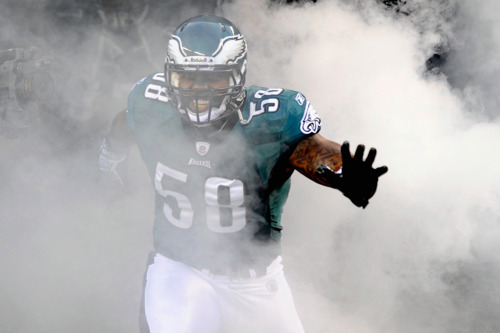
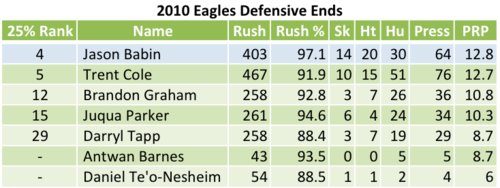
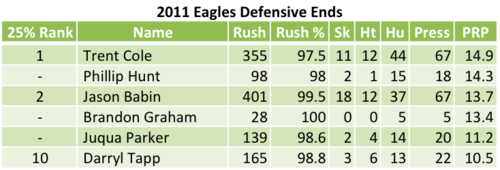


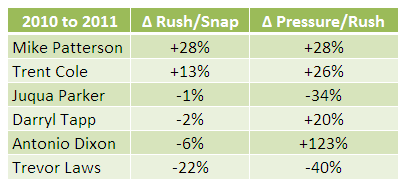 The first column shows change (Δ) in frequency of pass rushes per snap the player is in the game. There are some interesting trends there alone.
The first column shows change (Δ) in frequency of pass rushes per snap the player is in the game. There are some interesting trends there alone.